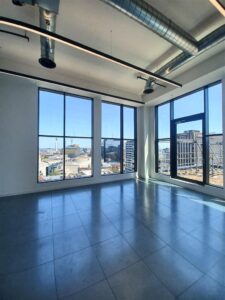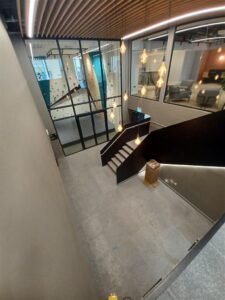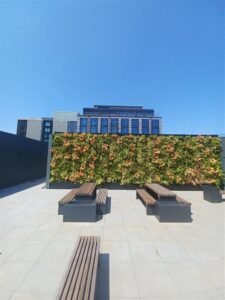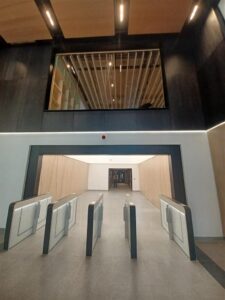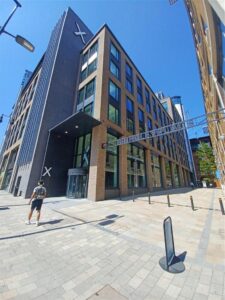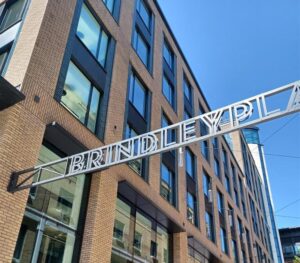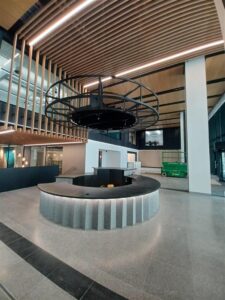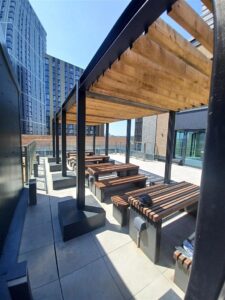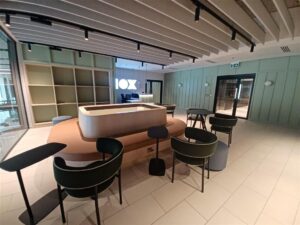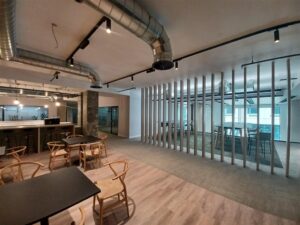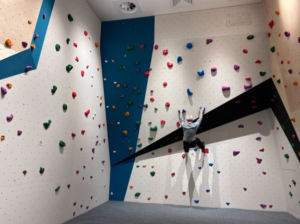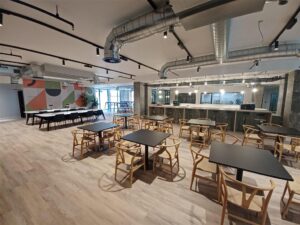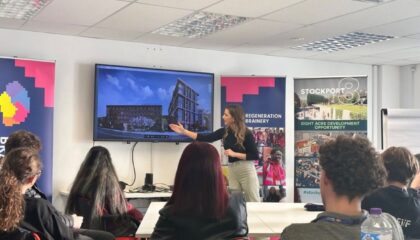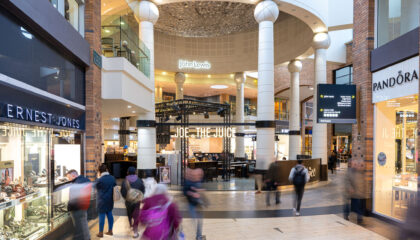Paul Stanley, Technical Director, Workman Project Management, examines why sustainable retrofit projects like 10 Brindleyplace are becoming increasingly attractive to investors.
Every year in the UK, 50,000 buildings are demolished. And of the 200 million tonnes of waste that are produced each year as a nation, nearly two-thirds is construction waste, according to the Architects’ Journal’s RetroFirst campaign. For Workman Project Management, all routes to sustainable retrofit are considered, so that it’s possible to leverage existing assets to deliver a carbon-positive future.
As the retrofit approach climbs higher up the agenda for investors looking to maximise their assets for the Net Zero age, it’s likely that more and more investors will take this approach, or at least consider its viability due to the potential commercial benefits of lower embodied carbon through retention.
One such project is the £40m back-to-the-frame retrofit transformation of 10 Brindleyplace – Birmingham’s largest office refurbishment scheme, and the largest development project at Brindleyplace since it was completed in 2009.
In this ambitious project, the existing building foundation, basement, and structural frame have been retained, which has enabled significant savings of almost 60% on embodied carbon when compared to creating a new development, according to a projected 60-year building lifecycle assessment, led by the Workman Project Management team.
The scheme, in collaboration with Associated Architects and Willmott Dixon Interiors, has combined 8 and 10 Brindleyplace into a single building, achieving a 210,000 sq. ft floor plate of high-quality grade A office space, with one of Birmingham’s largest available office floorplates, at over 27,000 sq. ft.
In managing the project, Workman Project Management tapped into the wealth of ESG expertise across the wider Workman business, with valuable Net Zero insight, contributing to the scheme’s design, and ongoing operation.
At the feasibility stage, a Net Zero Asset Plan was carried out by the Workman ESG team, and the intention is to review building performance post-occupancy as part of a re-evaluation of the Net Zero position in operation.
With a strong emphasis on sustainable design and occupier wellness, the building – which includes a basement-level bouldering wall – meets Net Zero targets in operation with an EPC A rating and has achieved a BREEAM rating of Excellent, along with Fitwel 2 Stars and WiredScore Platinum.
How 10 Brindleyplace achieved BREEAM Excellent
At the pre-construction assessment, the Workman Project Management team focused on planning so that the project could achieve its BREEAM goals. The principles of the project needed to be organised and designed accordingly.
During the construction phase, Workman Project Management focused on implementing the detailed construction plan, which enabled the project to gain BREEAM points for the following:
- The appointment of Sustainability Champions at the design stage and during the monitoring process ensured ongoing compliance with the project’s ESG criteria and targets. Life cycle assessments and elemental life cycle costs were calculated using BREEAM compliant methods.
- The project team committed to meet relevant criteria relating to monitoring energy, water use, transport of materials to and from site and waste from site. During the project, 100% of construction waste was diverted from landfill, either to be reused on other projects or recycled.
- The project design achieved BREEAM points for its indoor air quality plan, low carbon design, energy efficient lighting, safe walking paths to public transport hubs, the provision of cycling facilities, and efficient water consumption.
- Following the implementation of an ecologist’s recommendations, the ecological value of the site has been safeguarded, with effects on biodiversity minimised through a five-year landscape and habitat management plan, including a green roof, and biodiverse planting in line with expert recommendations.
- Timber used in the retrofit project was sourced in accordance with the UK government’s timber procurement policy, which must be legally harvested and traded to ensure sustainability.
As a result, 10 Brindleyplace has also delivered significant operational energy savings. The EPC A rating achieved by 10 Brindleyplace exceeds Government requirements for 2030.
Operational carbon efficiencies: 65% annual energy saving
The design of the redeveloped 10 Brindleyplace has drawn on thermal insulation, air tightness, glazing ratios, and glass specifications to reduce heating and cooling demands, thereby saving energy, operational costs, and carbon. The project team added a completely new energy efficient external façade system clad in a brick slip, which is a major contributor to the elevated EPC A rating.
The saving in energy compared to running a typical office could run 177 homes for one year. In fact, the building will deliver a 65% annual energy saving compared to a typical office of equal size.
In addition, smart building technologies have been deployed to provide real-time energy management using data from smart meters monitored via a digital twin. This allows ongoing performance management, helping to maintain energy and operational cost reductions, as well as contactless lighting and the management of indoor air quality.
The development has been designed with a 53% operational carbon reduction compared to pre-refurbishment, equating to 658 tonnes of CO2 per year, or the same mass as 100 Bullring Bulls. The need for gas and fossil-fuels has been removed, instead utilising all-electric heating, cooling and hot water systems. The system will be powered by renewable green energy, delivered in part by on-site solar PV, helping to reduce operational costs.
Mechanically ventilated via a central air system, the building incorporates smart controls, with ceiling finishes, raised access floors and efficient lighting installed. The building has also achieved WiredScore Platinum certification, supporting data connectivity and off-site server options, also reducing onsite power demand.
The back-to-the-frame transformation of 10 Brindleyplace was led by a driving force to create office space fit for today and the future needs of modern occupiers.
